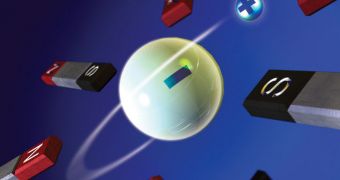An international team of scientists working in Europe managed to trap and store antimatter atoms for the first time, thus opening up a new branch of physics, and making it available for research.
The group conducts its investigations at the European Organization for Nuclear Research (CERN) headquarters, near Geneva, in Switzerland. The collaboration is called ALPHA.
The United States are represented in the project by researchers at the Department of Energy’s (DOE) Lawrence Berkeley National Laboratory (Berkeley Lab) and the University of California in Berkeley.
This accomplishment carries considerable implications for the future, when researchers will become able to analyze the fundamental symmetries of nature. This can be done even now, but with far less accuracy than theoretically possible.
What the ALPHA team did was store minute amounts of antihydrogen atoms, which are made up of a single negatively charged antiproton at the core. The particle is orbited by the antimatter equivalent of the negatively-charged electron, a positively-charged positron.
These strange atoms may provide particle physicists with amazing new insight into the laws of nature that govern antimatter, as opposed to the ones that govern the normal matter the world is made up of.
This could lead to a better understanding of the Universe as a whole. According to theories, normal matter and antimatter should have canceled each other out after the Big Bang, and yet they didn't. Researchers have been wondering why that happened for many years.
The ALPHA team first produced antihydrogen atoms some 8 years ago, but they couldn't store it because the particles interacted with the normal matter walls of their prison and got annihilated.
“Trapping antihydrogen proved to be much more difficult than creating antihydrogen. ALPHA routinely makes thousands of antihydrogen atoms in a single second, but most are too ‘hot’ to be held in the trap. We have to be lucky to catch one,” says Joel Fajans.
The scientist holds an appointment as a professor of physics at UCB, and works as a research scientist at the Berkeley Lab Accelerator and Fusion Research Division (AFRD). He is also a team member of the ALPHA experiment.
The team was only able to capture and store the antimatter atoms after it designed and built a Minimum Magnetic Field Trap (MMFT), a magnetic bottle of sorts that features magnetic fields capable to keeping the atoms away from the walls of the confine.
Details of the new work appear in the latest advance online issue of the esteemed scientific journal Nature, in a paper called “Trapped Antihydrogen.”
Part of the funds for the investigation came from the US National Science Foundation (NSF) and the Department of Energy’s Office of Science.

 14 DAY TRIAL //
14 DAY TRIAL //